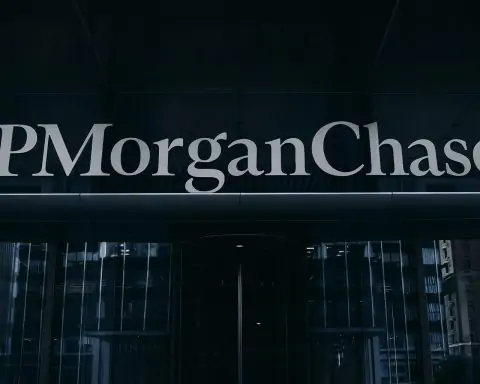Sydney | 26 November 2025
Australia’s housing and equity markets were hit by a powerful trio of developments today: the banking regulator’s first-ever national cap on highly leveraged home loans, a record A$4.02 billion takeover bid for self‑storage giant National Storage REIT, and Rio Tinto’s plan to sell a suite of US boron assets that supply nearly a third of global demand.
Together, the moves underscore how regulators and global investors are reshaping the next phase of Australia’s housing cycle and deal-making landscape.
APRA’s First Debt‑to‑Income Limit Targets Highly Geared Borrowers
The Australian Prudential Regulation Authority (APRA) has confirmed it will introduce a nationwide limit on high debt‑to‑income (DTI) mortgage lending from 1 February 2026, marking the first time the watchdog has activated its DTI “guardrail” across the banking system. [1]
Under the rule:
- A high‑DTI loan is defined as a mortgage where total debt is more than six times the borrower’s gross annual household income. [2]
- Authorised deposit‑taking institutions (banks and credit unions) will be allowed to write no more than 20% of new home loans above this six‑times‑income threshold.
- The 20% cap applies separately to:
- owner‑occupier lending, and
- investor lending. [3]
Some categories are carved out. Bridging loans and loans to build or purchase new dwellings are excluded, a deliberate decision to avoid gumming up normal property transactions and to support governments’ housing‑supply targets. [4]
APRA chair John Lonsdale framed the move as a pre‑emptive strike rather than an emergency brake. The regulator’s new System Risk Outlook report, released last week, warned that high household debt – still around 180% of disposable income – remains a “key vulnerability” for the financial system, with a clear pick‑up in riskier forms of housing credit, especially high‑DTI investor loans. [5]
APRA stresses most lenders are currently well below the new limit, so the rule is not expected to choke credit in the short term. Instead, it is designed as a cap on how far the system can lean into leveraged borrowers if interest rates fall and competition for mortgage market share heats up. [6]
The regulator has also signalled that if high‑risk lending continues to rise, it is prepared to go further, including investor‑specific measures or additional macroprudential tools. [7]
Why APRA Is Acting Now
Today’s announcement is the culmination of a year‑long build‑up of warnings from both APRA and the Council of Financial Regulators:
- APRA’s November System Risk Outlook highlights renewed momentum in house prices as interest rates eased, alongside strong investor credit growth, now the fastest in a decade. [8]
- The same report notes a clear uptick in high DTI and high loan‑to‑valuation ratio (LVR) lending, as banks compete more aggressively for market share. [9]
- External data show interest‑only housing loans – historically associated with investors – have risen to around 20.4% of outstanding home loans, the highest level since 2019, raising concerns that a more speculative phase of the cycle is returning. [10]
APRA has been preparing for this moment since it embedded a formal macroprudential toolkit in Prudential Standard APS 220 back in 2022, explicitly listing DTI, LVR and interest‑only caps as measures it could activate with as little as a month’s notice. [11]
Internationally, the move aligns Australia more closely with peers. New Zealand’s central bank, for example, already limits banks to no more than 20% of new owner‑occupier loans above a DTI of 6, and 20% of investor loans above 7, a structure APRA’s framework closely resembles. [12]
What the New DTI Cap Means for Borrowers and Banks
1. Investors will feel the pinch first
APRA and market economists agree the cap is likely to bite harder on investors than on owner‑occupiers, because investors are more prone to stretching their borrowing power:
- They often hold multiple properties and larger loan balances, pushing their DTI ratios above six. [13]
- Many new interest‑only loans are going to investors, a cohort already on APRA’s radar. [14]
As banks start managing to the 20% ceiling, they are likely to become choosier about which high‑DTI investor loans they approve – potentially favouring borrowers with stronger buffers and more diversified income, and squeezing out marginal “stretch” investors.
2. High‑income owner‑occupiers may hit a ceiling
For owner‑occupiers, the DTI cap is unlikely to block the average borrower, but it could restrict very highly leveraged purchases, especially in Sydney and Melbourne where even middle‑income households can find themselves near six times income for typical family homes.
Banks that are approaching the cap will have three main levers:
- Trim maximum loan sizes for some borrowers;
- Reprice risk via slightly higher margins on high‑DTI loans; or
- Rebalance their book towards lower‑DTI lending.
Because new‑build and bridging finance are excluded, the rule is less likely to disrupt off‑the‑plan purchases or people temporarily carrying two mortgages during a move. [15]
3. Housing market impact: more brake than handbrake
In the near term, most analysts expect the DTI cap to act as a speed limiter rather than a slam on the brakes:
- Reuters reporting notes APRA does not expect a material short‑term credit squeeze, given that the share of high‑DTI loans is still modest at a system level. [16]
- APRA’s own stress testing suggests banks and households remain resilient, but that resilience could be eroded if credit standards weaken into a boom. [17]
The bigger effect is psychological and forward‑looking: the new rule tells lenders and borrowers there is now a hard ceiling on how far leverage can run, even if interest rates move lower again.
Markets Digest APRA’s Move as Rate‑Hike Talk Returns
Despite the tighter mortgage settings, ASX 200 futures were up around 0.3% to 8649 heading into Thursday’s session, with traders taking their cues from a Wall Street rally and rising odds of a December US Fed rate cut. [18]
In APRA’s home market:
- Major bank shares traded relatively steadily, reflecting the view that the cap is mostly a guardrail rather than an immediate earnings hit.
- Housing‑exposed stocks – from developers to building materials – are watching closely for any sign that high‑DTI curbs cool investor demand over coming months.
The tightrope is complicated by mixed signals on rates. Commonwealth Bank chief economist Luke Yeaman told the ABC that strong growth, a tight labour market, rising house prices and a recent upside surprise on inflation mean rate cuts are off the table and hikes in 2026 are now a genuine risk. [19]
That leaves households facing a world where:
- It’s harder to secure very large loans, and
- It’s no longer safe to assume cheaper money is just around the corner.
A$4.02 Billion Brookfield–GIC Bid Puts National Storage REIT in Play
While APRA was tightening the screws on mortgage leverage, global capital zeroed in on one of the most defensive corners of the property market: self‑storage.
National Storage REIT (ASX: NSR) confirmed it has received a A$4.02 billion all‑cash takeover offer from a consortium led by Canadian asset manager Brookfield and Singapore’s sovereign wealth fund GIC. [20]
Key deal terms:
- The consortium is offering A$2.86 per share, a 26.5% premium to National Storage’s last closing price. [21]
- If completed, it would be Australia’s largest real‑estate take‑private transaction, eclipsing Brookfield’s 2019 acquisition of Aveo Group. [22]
- National Storage’s board has granted exclusive due diligence until 7 December, giving the bidders a clear run to firm up a binding proposal. [23]
Trading in NSR shares was briefly halted ahead of the announcement, before the stock surged around 19% to A$2.70 as investors priced in the higher bid and the possibility of a successful scheme of arrangement. [24]
Why Global Capital Loves Aussie Storage Sheds
Founded in 1995, National Storage runs more than 270 sites and serves roughly 94,500 customers across Australia and New Zealand, making it the region’s largest self‑storage operator. [25]
For Brookfield and GIC, the attractions are clear:
- Non‑cyclical demand – Storage usage is tied to life events such as moving, downsizing or separation, rather than to the economic cycle, offering relatively stable cashflows. [26]
- Embedded growth – Many facilities can be expanded, repriced or reconfigured to increase revenue without heavy development risk.
- Consolidation potential – National Storage holds about 10% of rival Abacus Storage King, giving any buyer a seat at the table in future sector M&A. [27]
The bid also reflects a broader theme: listed Australian REITs trading below asset value are increasingly drawing the attention of private capital, particularly when interest rates appear to be peaking.
What Happens Next for NSR Investors?
The consortium’s access to exclusive due diligence doesn’t guarantee a deal, but it significantly raises the odds. Key milestones to watch:
- Due diligence outcome (by 7 December): If Brookfield–GIC likes what it sees, a binding, board‑endorsed offer could follow quickly. [28]
- Regulatory review: A successful bid would likely require Foreign Investment Review Board (FIRB) approval, though self‑storage assets are generally viewed as low‑sensitivity.
- Competing bids: Previous suitors, including Warburg Pincus and US storage giant Public Storage, have circled National Storage before without sealing a deal, and analysts see a low likelihood of a bidding war this time. [29]
For REIT investors more broadly, the NSR bid is another reminder that private markets often place a higher value on dependable income streams than public markets do during periods of rate volatility.
Rio Tinto’s US Boron Asset Sale Shows Strategic Shift
Rounding out the day’s headlines, Rio Tinto has confirmed it is preparing to sell a cluster of boron‑producing assets in California, in a move that could fetch up to US$2 billion and further streamline its portfolio. [30]
According to reporting from Mining.com and Investing.com:
- The sale package includes Rio’s historic Boron open‑pit mine and processing operations in the Mojave Desert town of Boron, its refinery and shipping facilities at the Port of Los Angeles, and its Owens Lake operationnear the Sierra Nevada. [31]
- Together, these California operations meet around 30% of global boron demand, underscoring their strategic importance. [32]
- Rio has engaged UBS and JPMorgan to run the process, which is expected to kick off within the next fortnight. Likely buyers include private equity firms and chemical producers. [33]
Boron may sound niche, but it plays a critical role in:
- fertilisers,
- glass and ceramics,
- fiberglass insulation, and
- strengthening metal alloys.
The United States recently added boron to its critical minerals list, citing its role in national‑security‑sensitive applications such as high‑performance magnets and advanced materials. [34]
Why Sell a Critical Mineral Business?
The planned divestment is best understood in the context of Rio’s broader strategy under new CEO Simon Trott, who has reorganised the group into three main divisions and ordered a review of its industrial minerals portfolio. [35]
Key motivations include:
- Refocusing on core profit drivers – iron ore, copper and aluminium still generate the bulk of Rio’s earnings, while boron, though important, is relatively small. [36]
- Simplifying the asset base – trimming non‑core operations frees up management bandwidth and capital for larger growth projects, including US‑linked critical minerals and renewable‑energy partnerships. [37]
- Capital recycling – a sale near the reported US$2 billion mark would bolster Rio’s ability to fund new projects or accelerate shareholder returns, depending on market conditions. [38]
Investors appeared to welcome the move, with Rio’s stock edging higher on the day of the report, according to Investing.com data. [39]
The Bigger Picture: Macroprudential Guardrails Meet Global Dealmaking
Taken together, today’s developments point to a new phase for Australia’s economy and markets:
- Household leverage is hitting a hard limit. APRA’s DTI cap makes it clear that the era of ever‑rising loan multiples is over, at least for this cycle. Future housing booms will face explicit macroprudential guardrails long before the system becomes dangerously stretched. [40]
- Global capital is still bullish on Australian real assets. The Brookfield–GIC tilt at National Storage underscores how offshore investors continue to see value in Australian property platforms with dependable cashflows, especially when public market valuations lag underlying asset values. [41]
- Miners are reshaping portfolios for the energy transition. Rio’s decision to sell a century‑old boron business while deepening its exposure to copper, aluminium and renewables illustrates how even “old economy” giants are repositioning for a new mix of demand and regulation. [42]
For borrowers, the immediate takeaway is simple: how much you earn now matters more than ever for how much you can borrow, and there is now an explicit national limit on ultra‑high‑DTI loans.
For investors, the lesson is two‑fold:
- Macroprudential policy can move just as quickly as interest rates in reshaping credit conditions; and
- High‑quality, income‑generating assets – whether storage sheds or specialty minerals – remain prime hunting ground for global capital.
As APRA’s new rule beds in, attention will turn to how banks, property markets and big‑ticket deals adjust to this new, more disciplined era of leverage.
This article is for general information only and does not constitute financial or investment advice. Seek professional advice before making financial decisions.
References
1. www.abc.net.au, 2. www.abc.net.au, 3. www.abc.net.au, 4. www.abc.net.au, 5. www.apra.gov.au, 6. www.abc.net.au, 7. www.abc.net.au, 8. www.apra.gov.au, 9. www.apra.gov.au, 10. www.domain.com.au, 11. www.apra.gov.au, 12. www.rbnz.govt.nz, 13. www.abc.net.au, 14. www.domain.com.au, 15. www.abc.net.au, 16. www.investing.com, 17. www.reuters.com, 18. www.theaustralian.com.au, 19. www.abc.net.au, 20. www.reuters.com, 21. www.reuters.com, 22. www.reuters.com, 23. www.reuters.com, 24. www.reuters.com, 25. www.reuters.com, 26. www.reuters.com, 27. www.reuters.com, 28. www.reuters.com, 29. www.reuters.com, 30. www.mining.com, 31. www.mining.com, 32. www.mining.com, 33. www.mining.com, 34. www.mining.com, 35. www.mining.com, 36. www.gurufocus.com, 37. www.reuters.com, 38. www.mining.com, 39. www.investing.com, 40. www.apra.gov.au, 41. www.reuters.com, 42. www.mining.com








